LOTUS TURBO ESPRIT
The History and Development of the Legendary Sports Car
In The Glasshouse Kolosy building, where the museum is also located, a Lotus Espirit V8 Turbo and a Lotus Omega Carlton will be available for viewing during the British themed change.
The Lotus Esprit is a legendary sports car in its own right, produced from 1976 to 2004. The history and development of the car is closely intertwined with the Lotus brand and its famous designers. The Turbo Esprit versions gained a particularly high reputation for their excellent performance and driving experience.
The story of the Lotus Turbo Esprit is unthinkable without Colin Chapman. The brilliant engineer and entrepreneur, who is credited with the success of the Lotus brand, personally played a major role in the development of the Esprit. Chapman’s philosophy that a car should be light, strong and reliable is felt in every part of the Esprit. When the Turbo Esprit was released, the model represented the most modern technology and became one of the dominant players in the sports car market. Chapman also served as his personal car, an Esprit Turbo, which he provided with many unique modifications. This special car is still legendary today and enjoys cult status among fans of the Lotus brand.
The first version of the Lotus Esprit was introduced in 1976 and the body design was created by the Italian car designer Giugiaro Giorgetto. The sharp, wedge-shaped shape of the Esprit immediately attracted the attention of car enthusiasts. The first generation (S1) was powered by a 2.0-liter four-cylinder engine that produced 160 horsepower and was produced until 1978.
The introduction of the Turbo Esprit took place in 1980, which brought a significant increase in performance to the model range. The heart of the car was a 2.2-liter, four-cylinder turbo engine, which provided 210 horsepower and 270 Nm of torque. This allowed the car to accelerate from 0 to 100 km/h in 6.1 seconds, and its top speed exceeded 240 km/h.
In 1987, the Esprit S3 (Series 3) version debuted, which came with a refined design and improved technical solutions. In the Turbo Esprit version, the 2.2-liter engine continued to work, but with the improvement of the compression ratio and the fuel injection system, the output increased to 215 horsepower. In the S3 version, even the interior has become more modern and comfortable, with a new dashboard and seats.
At the beginning of the 1990s, Lotus introduced the Esprit SE version, in which the most advanced technologies of that time were used. The 2.2-liter turbo engine produced 264 horsepower and 353 Nm of torque, with which the car reached 100 km/h in 4.7 seconds. The Esprit SE was one of the most powerful models in Lotus’ history and still retained the light, agile driving experience typical of sports cars.
The last generation of the Esprit was released in 1996 and brought significant changes to the model range. It was the only engine developed and designed by Lotus. Lotus introduced the Esprit V8 version, which was powered by a 3.5-liter twin-turbo V8 engine. Its real output reached 500 horsepower, but to protect the drive and the engine, the turbo pressure was reduced, so this engine provided 350 horsepower and 400 Nm of torque, which allowed the car to accelerate to 100 km/h in 4.4 seconds, and reach a top speed of 282 km/h. The Esprit V8 was clearly the top model in the range’s history and remained true to the Lotus tradition of light weight and precise driving experience.
The Lotus Turbo Esprit had the following racing successes:
In 1990, Doc Bundy won the IMSA Bridgestone Supercar Championship.
In 1991, the Lotus Turbo Esprit finished second in the SCCA World Challenge.
In 1992, Doc Bundy won the IMSA Bridgestone Supercar Championship.
In 1993, the Lotus Turbo Esprit finished second in the IMSA Bridgestone Supercar.
In 1994, the Lotus Turbo Esprit took 14 IMSA Bridgestone Supercar victories.
In 1995, the Lotus Turbo Esprit completed 62 races in the IMSA Bridgestone Supercar.
Lotus Turbo Esprit drivers included Doc Bundy, Paul Newman, Andy Pilgrim and Michael Brockman.
The Lotus Esprit gained huge popularity in the 1977 James Bond film „The Spy Who Loved Me”, in which it was transformed into a submarine.
A Lotus Esprit also appeared in the later 1981 film „For Your Eyes Only”, but this was a bronze version and did not have the submarine capability.
The Esprit then became a major cultural landmark when it was featured in the 1990 film „Pretty Woman,” in which Richard Gere’s character drove a Lotus Esprit SE. The huge success of the film contributed to the car’s popularity, and the Lotus Esprit became one of the most recognizable sports cars among the public.
In addition, in the 1992 erotic thriller „Basic Instinct”, the Lotus Esprit is not only a car, but also a character. In the film, the mysterious and manipulative writer Catherine Tramell (Sharon Stone) drives a black Lotus Esprit, emphasizing her character’s powerful and provocative personality.
Turbo Esprit Models and their Serial Numbers:
Esprit S2 (1978-1981) A model before the introduction of the Turbo Esprit, but 1,061 S2s rolled off the production line (only 33 between 1980-81).
Esprit S2.2 (1980-1981) Total: 88 pieces
Esprit Turbo (1980-1987) (Series 2.2 and Series 3) Production number: 1,645
Esprit Turbo HC (High Compression) (1986-1987) Number of production units: 280 units
Esprit Turbo SE (1989-1993) Number of production units: 1,608 units
Esprit Turbo SE Highwing (1992-1993) Number of production units: 64 units
Esprit S4 (1993-1996) Not all S4 models were equipped with a turbo, so the production number of the S4 Turbo is an estimate. Number of production units (estimated): 623 units
Esprit S4s (1994-1996) Number of production units: 367 units
Esprit GT3 (1996-1999) Number of production units: 194 units
Esprit V8 Turbo (1996-2004) The V8 Turbo models were produced in several different variants, including the GT, SE, Sport 350 and Final Edition models. Total number of units produced: approximately 1,231 units
Based on the individual variants and their production numbers, the total production number of Turbo Esprit models is approximately 6,106 units. These values show the relative rarity and uniqueness of the Turbo Esprit series versions. The history of the Lotus Turbo Esprit models shows a continuous evolution from the introduction of the turbo four-cylinder engine to the last V8 version, during which the car has always remained synonymous with performance, driving pleasure and innovation. Film appearances only further increased the car’s reputation and helped make the Lotus Esprit a true automotive icon.
The Lotus and Esprit were known for their unreliability. Jeremy Clarkson joked about the brand’s name that LOTUS stands for; LOTUS = „Lots of trouble, usually serious”
The basic principle of Lotus that their Esprit car also followed, which is „Simplify, then add lightness” (Written by: György Dési)
Subscribe to our newsletter
Provide your e-mail address and click the button below to receive special deals and premium offers




